Bringing a feathered friend into your life can be a joyful and rewarding experience, but it’s not a decision to be taken lightly.
Before you open your heart and home to a new avian companion, there are essential steps to consider to ensure both your happiness and your future pet’s well-being.
In this comprehensive guide, we’ll walk you through ‘how to prepare to adopt a bird‘. We’ll explore the importance of choosing the right bird for your lifestyle, creating a safe and enriching living space, and understanding the commitment involved in avian companionship.
Whether you’re new to bird ownership or an experienced bird enthusiast, this guide will provide valuable insights and tips to ensure a harmonious and fulfilling relationship between you and your future feathered companion.
So, let’s begin the journey towards creating a loving and nurturing home for your soon-to-be-feathered family member.
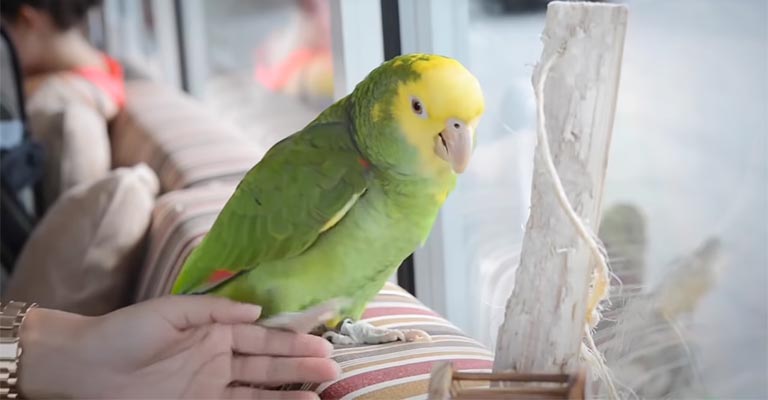
How to Prepare to Adopt a Bird?
Before you decide to adopt a bird, it’s vital to research different bird species and choose the one that aligns with your lifestyle and preferences. Each species has unique characteristics, including size, temperament, and care requirements.
Consider factors like the bird’s size, noise level, and activity level to make sure it fits your living situation and daily routine. For beginners, budgerigars (budgies) or cockatiels are often recommended due to their relatively easy care and friendly nature.
If you’re more experienced or looking for a larger, more interactive bird, consider species like conures, African grey parrots, or macaws. In-depth research into your chosen species is essential to provide the best possible care. Here’s what to do next:
Find a Reputable Breeder or Rescue Organization
Once you’ve decided on the species, it’s time to find a reputable breeder or rescue organization. Look for breeders or organizations with a good reputation, who prioritize the well-being of their birds.
Avoid pet stores, as they often have birds that come from less-than-ideal breeding conditions. Rescue organizations are a great choice as they offer a chance to provide a loving home to a bird in need.
Always ensure the birds have been properly cared for and health-checked before adoption.
Prepare Your Home
Before bringing your feathered friend home, you must bird-proof your living space. Birds are curious creatures, and their environment should be safe and free from potential hazards.
Remove toxic plants and ensure the environment is free from hazardous chemicals. Keep windows and mirrors covered to prevent collisions. Secure electrical cords, as birds may chew on them.
Remove any small objects that the bird could swallow. Consider the placement of valuable or fragile items.
Get the Right Cage and Accessories
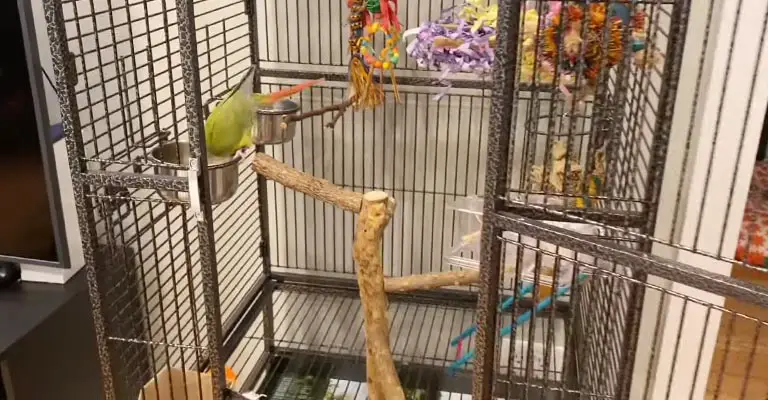
A suitable cage is essential for your bird’s well-being. Choose a cage that is spacious, well-constructed, and easy to clean. Ensure the bar spacing is appropriate for your bird’s size to prevent escapes or injuries.
Provide perches of varying sizes and materials to keep your bird’s feet healthy. Offer toys and interactive items to prevent boredom and stimulate your bird’s mind. Make sure the cage is located in an area where your bird can see and interact with you and your family.
Nutrition and Diet
Proper nutrition is critical for your bird’s health. Different bird species have different dietary requirements, so research your bird’s specific needs. Fresh water should always be available, and high-quality bird food is a must.
Incorporate a variety of fresh fruits and vegetables into your bird’s diet. Avoid feeding them avocados, chocolate, caffeine, and foods high in salt or sugar, as these can be harmful.
Health Care and Regular Vet Visits
Just like any pet, birds need regular health care. Find a qualified avian veterinarian who can provide guidance on your bird’s health and administer regular check-ups. Early detection of health issues can make a significant difference in your bird’s well-being.
Socialization and Training
Most birds are highly social creatures, so it’s important to spend time with your bird every day. Building a strong bond with your bird through gentle and positive interactions will lead to a happier and more well-adjusted pet.
Training is also a key aspect of responsible bird ownership. Teach your bird basic commands and tricks through positive reinforcement. This not only provides mental stimulation but also strengthens the bond between you and your bird.
Addressing Behavioral Issues
Birds are intelligent and need mental stimulation. Provide a variety of toys, puzzles, and activities to keep your bird engaged and prevent boredom. Rotate toys regularly to keep things interesting.
Birds can develop behavioral issues, such as excessive screaming or feather-plucking. It’s important to address these problems promptly and with patience. Consult with an avian behaviorist if necessary, as they can provide guidance on resolving these issues.
What Is the Easiest Bird to Have as a Pet?
The easiest bird to have as a pet can vary depending on your experience, living situation, and personal preferences.
However, some bird species are generally considered more beginner-friendly due to their manageable size, friendly demeanor, and relatively straightforward care requirements. Let’s explore some of the easiest birds to have as pets and what you need to know about them.
Budgerigars (Budgies)
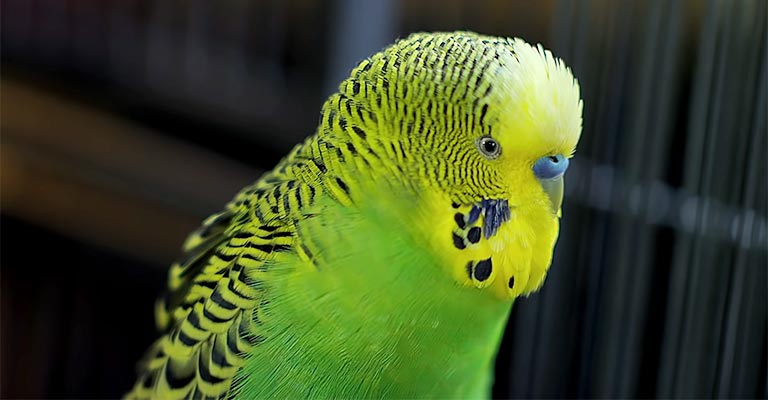
Budgerigars, often referred to as “budgies,” are one of the most popular pet birds and are an excellent choice for beginners. These small parakeets are known for their friendly and social nature. They are relatively easy to care for and adapt well to living in captivity.
Budgies are small, typically around 7 inches in length, which makes them easy to accommodate in your home. Budgies are known for their social and interactive behavior. They are relatively easy to tame and can form strong bonds with their human caregivers.
Budgies have straightforward dietary requirements, mainly consisting of high-quality birdseed mixes, fresh fruits, and vegetables. They also enjoy the occasional treat.
Due to their small size, budgies do not require large cages. A well-ventilated cage with space for flying and perches is sufficient. Provide them with a variety of toys and interactive items to keep them mentally stimulated.
Cockatiels
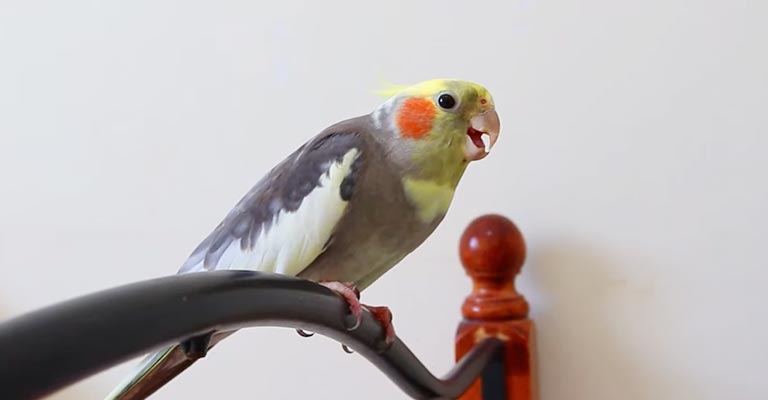
Cockatiels are another popular choice for beginners. These medium-sized parrots are known for their charming personalities and relative ease of care.
Cockatiels are larger than budgies but still a manageable size, with an average length of around 12 inches. Cockatiels are known for their gentle and affectionate nature.
They are often eager to interact with their owners and can be trained to perform tricks and mimic sounds. Their diet is similar to budgies and consists of birdseed mixes, fresh fruits, vegetables, and the occasional treat.
Cockatiels require a slightly larger cage than budgies, but it should still provide ample space for exercise and play. A variety of toys and perches should be included for their entertainment.
Lovebirds
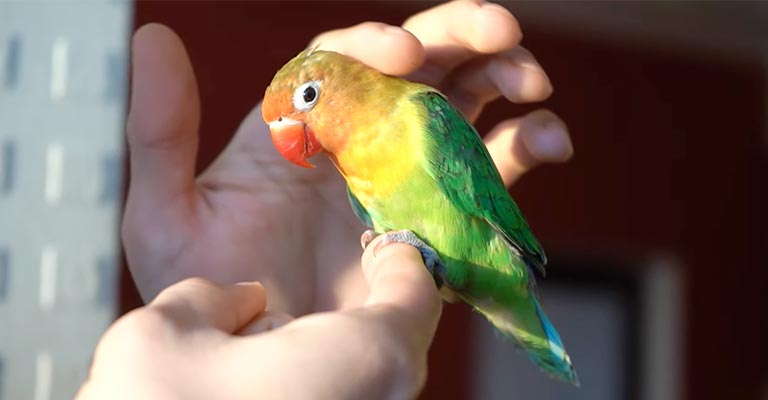
Lovebirds are small parrots known for their affectionate behavior and strong pair bonds. While they can be a bit more challenging to care for compared to budgies or cockatiels, they are still considered relatively easy for bird enthusiasts.
Lovebirds are small and typically measure around 5 to 7 inches in length. As their name suggests, lovebirds are highly social and form strong bonds with their human caregivers. They enjoy cuddling and can be quite playful.
Lovebirds have similar dietary requirements to budgies and cockatiels, including a mix of high-quality bird seed, fresh fruits, and vegetables. Provide a spacious cage with a variety of perches and toys to keep lovebirds engaged and mentally stimulated.
Canaries
Canaries are known for their beautiful singing and vibrant plumage. They are a good choice for those who appreciate the beauty of birdsong and colorful displays. Canaries are easy to care for due to many factors. Canaries are small, measuring around 5 to 7 inches in length.
They are generally less interactive with humans compared to parakeets or cockatiels, but they can be quite entertaining to watch and listen to. Canaries are usually more independent and require less social interaction.
Canaries don’t need particularly large cages, but they should have enough room to fly and move around comfortably. Providing them with a variety of perches and the opportunity to see the outside world through a window can keep them entertained.
FAQs
How can I reduce my pet bird’s fear of me?
Reducing your pet bird’s fear of you requires patience and positive interaction. Spend time near the cage, talk softly, and offer treats to create a positive association. Slowly and gently introduce your hand, letting the bird approach it at its own pace.
What can I do to prevent wild birds from colliding with my windows?
To prevent birds from colliding with windows, you can apply bird-safe decals or window film to make the glass more visible to them. Keep curtains or blinds partially closed, or hang netting on the outside of the window. Reducing indoor lighting at night can prevent nocturnal collisions.
How can I help a wild bird that seems injured or scared in my yard?
If you encounter an injured or scared wild bird, it’s best to contact a local wildlife rehabilitator or bird rescue organization for guidance. Do not attempt to handle the bird yourself, as it may have injuries that are not immediately visible.
Why do some birds seem fearless and approach humans for food?
Some birds, especially in urban areas, become habituated to human presence and may approach people for food. This behavior is learned over time and can be detrimental to the birds’ health.
Feeding wild birds should be done responsibly, and it’s better to let them forage for natural food sources.
Can a pet bird overcome its fear of certain objects or situations?
With patience and positive reinforcement, pet birds can overcome certain fears. Gradual exposure to the feared object or situation while rewarding the bird with treats or praise can help desensitize them. However, it’s important to respect a bird’s individual comfort zone.
Conclusion
Adopting a bird can bring immense joy and companionship into your life, but it comes with responsibilities. By following the steps and advice provided in this guide, you’ll be well-prepared to embark on your avian journey.
Remember that every bird has its own unique personality and needs, so be patient and adaptable as you build a bond with your new feathered friend.
Creating a safe and stimulating environment, selecting the right bird species, and understanding the commitment involved are all essential to ensuring a happy and healthy life for your pet.
As you embark on this exciting adventure, you’ll find that the love and companionship offered by your bird is truly priceless.
In your preparation and care, you’ll create a loving and nurturing home for your feathered family member, where the sweet melodies and vibrant plumage of your avian companion will enrich your life and brighten your days.